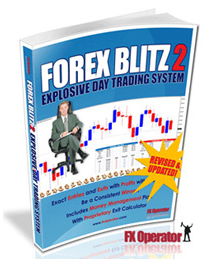http://www.theforextimemachine.com/home_200909.php
Someone in my discussion board asked whether it is worth paying a few thousand dollars for getting the proper investment education. I was happily explaining to this person that when it comes to investing in myself, I need not think hard because I know before and now, and even after that investing in myself will generate a huge return in the long run. So, what happened was that I grabbed a copy of Forex Time Machine and studied the methods in about two days.
As a professional trader, grabbing the methodology of the three methods in FTM is quite easy. Like Bill nicely put in his Q&A upon the launch of FTM, experienced traders will still benefit from the course because it is perfectly fine to add on additional tools and trading methods to their toolboxes, and this means that these experienced traders are armed with more weapons and are flexible to trade the ever-changing market.
FTM discusses three trading methods - Breakout, Momentum and Spring. Spring method is also part of the previous course "Forex Income Engine 2.0". The interesting part to me is therefore the breakout and momentum.
Momentum method

Imagine that this is the set-up of the momentum method as discussed in FTM. There are just a few technical indicators in the chart. For me, I prefer to trade currency using hourly chart although FTM methodology is fractal in nature which means that you can use it for longer and shorter time frames.
Although it is not part of the requirement to understand the fundamental, by combining what I learnt from Jimmy Young of FXTE pertaining to how to read the market from a top-down approach, picking up a bearish trading opportunity in GBP/USD is no brainer, to be frank with you.
So, based on the momentum method, we will enter a short GBP/USD position at around 16192, and within two hours, we should be able to close this position around 1.6000. That's like 192 pips more or less, and just one trade using standard lot, the course fee has been recouped.
Breakout Method
How about the breakout method? Here is just another example of the breakout method set-up.
 As you can see from the chart on the left, there are just a few technical indicators to be used. However, while it is not discussed in the course, I believe it is important to understand the fundamental. So, Jimmy's insight in reading the market helps me to determine that when the market is weak, USD is up because of a strong correlation over the last two weeks, and an inverse correlation with the commodities such as gold and oil, shorting AUD/USD is again a no-brainer job.
As you can see from the chart on the left, there are just a few technical indicators to be used. However, while it is not discussed in the course, I believe it is important to understand the fundamental. So, Jimmy's insight in reading the market helps me to determine that when the market is weak, USD is up because of a strong correlation over the last two weeks, and an inverse correlation with the commodities such as gold and oil, shorting AUD/USD is again a no-brainer job.See we don't need to follow 100% what the course discusses. The key point as a trader is to understand our own trading preference and psychology, and copy & paste what seems to work for us, and that's is. This is why it is so hard for a newbie to make money immediately because he has yet to develop the craft. It does not mean the course does not work. It works, and yet it works because we understand how to trade the methods and apply what suits us.
For this trade, we should be able to make around 30 pips within an hour or US$300 using one standard lot.
Unfortunately, I understand that the launch has come to an end. For those who procrastinated or were skeptical about paying a few thousand dollars, sorry to hear that. It's normal for human beings to be skeptical. You may need to wait for the next launch then.
I mentioned to this person that there is actually nothing to lose because the course provides MBG (Money Back Guarantee). So, if we are not happy with the course, we can return it to Bill and incur at most administrative fees on shipment. At least we give ourselves an experience to find out if the product works for us. Again, human psychology tells us that most of us will not even dare to make this move - hence explaining why for every thing the mankind do, only 5% of the people will eventually be the Elite Club.



















